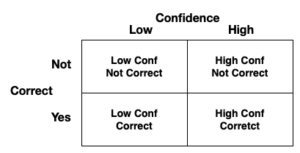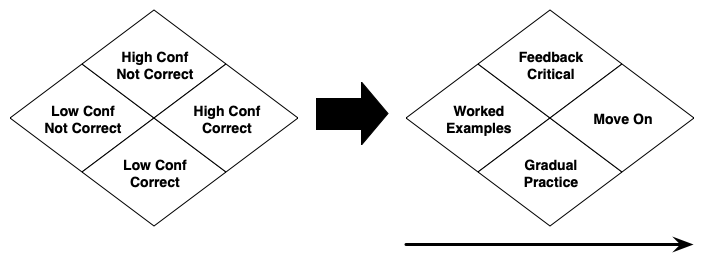As I’ve noted before, someone on LinkedIn asked a question, and it’s prompting a reply. In this case, the question was in response to my previous post on superstitions (for new L&D practitioners). He asked “How did we even get here?” I’ve talked before about the sorry state of our industry, but haven’t really shared my thinking on why this is the case. My short response was that it’s complex. Here’s the longer response, trying to answer why L&D isn’t better.
First, I think we’re suffering from some mistaken beliefs. In particular, that presenting information will lead to behavior change. As I’ve noted before, I think this is a legacy of our beliefs that we’re formal logical reasoners. That is, if we were such beings (we’re not), this would likely be true. We’d respond to information by changing how we act. Instead, of course, we don’t change our behavior without practice, reinforcement, etc.
Another contributor, I suggest, is that a belief that if we can perform, we can teach. We can, therefore, take the best performer, and turn them into a trainer. Which is mistaken for a couple of reasons. For one, expertise is compiled away, and isn’t accessible. Estimates suggest around 70% of what experts do, they literally can’t tell us. It’s also a mistake to think that just anyone can teach. There’re specific skills that need to go into it.
Of course, we’re not aware of our flaws. We don’t measure, by and large. Even when we do, we too often measure the wrong things. So, we see the bad practice of just looking at what learners think of the experience. Which has little correlation with the actual impact. We seldom look to see if the learning has actually changed any behavior, let alone whether it’s now at an acceptable level.
I do think we also still see the effects of 9/11. When we didn’t want to travel, we went to elearning. Rapid eLearning tools emerged to make it fast to take the PPTs and PDFs from the previous courses and put them onscreen with an added quiz. This has led to expectations that courses can be churned out quickly. Indeed, except that these ‘courses’ won’t have any impact!
One other factor is that our stakeholders also don’t know nor care. They know they need to invest in learning, so they do. It’s a cost center, not a driver of business success. No one is (yet) calling us on the carpet to justify our success. That’s changing, however. I just would like for us to be proactive, not reactive. Moreover, there’s a bigger opportunity on tap, not only to help the organization execute on the things that it needs to do, but also to facilitate the new knowledge the org will need.
In short, we don’t seem know what learning is, and we’re blind to the fact that our approaches aren’t useful. These, of course, are all premises I’ve addressed in my call to Revolutionize L&D. I still think there’s a meaningful role for L&D to play, but we have to lift our game. That’s my explanation of why L&D isn’t better, what’s yours?






